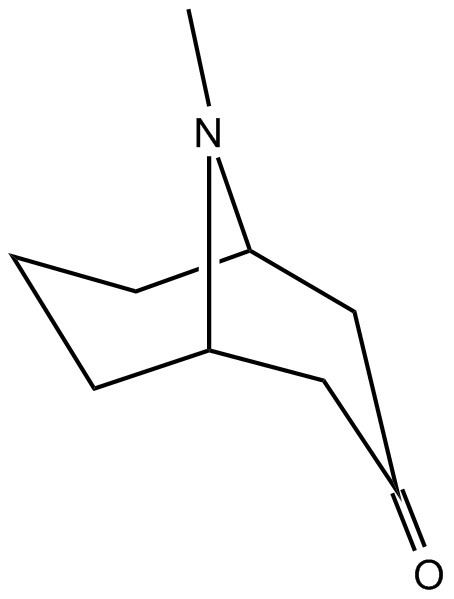Boiling point 40 °C | Pubchem 11096 | |
 | ||
Appearance Colorless (yellows on exposure) | ||
How to say pseudopelletierine high quality voices
Pseudopelletierine is the main alkaloid derived from the root-bark of the pomegranate tree (Punica granatum), along with at least three other alkaloids: pelletierine, isopelletierine, and methylpelleteirine (C9H17ON), which yield 1.8, 0.52, 0.01, and 0.20 grams per kilogram of raw bark. Isopelletierine is optically inactive.
It is a homolog of tropinone, and can be synthesized in a manner analogous to the classical Robinson tropinone synthesis, using glutaraldehyde (rather than succinaldehyde), acetonedicarboxylic acid, and methylammonium chloride.
Pelletierine sulphate is used medicinally in Iraq as an anthelmintic and anti-amoeboid. It triggers, like strychnine, a stimulant reflex, which is effective against tapeworms, ring worms and nematodes. Simple bark-extracts have recently been shown to be effective in vitro against the intestinal bacteria salmonella typhi, vibrio cholera, herpes simplex, HIV, and tumors.
